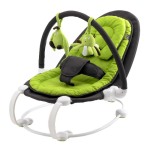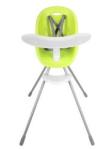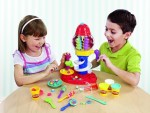No rookie mom-to-be needs to be told that babies cry. It’s perfectly normal for newborns to dedicate two hours a day to crying and those are the ones I’d class in the ‘happy baby’ category. If you’re a mom who has been ‘blessed’ with a colicky baby you’ll know all too well that 2 hours of crying means a good day.
As a childless couple it seemed we were plagued by crying babies in restaurants, in neighboring hotel rooms, on planes. But looking back these were minor annoyances compared to having a baby crying, crying, CRYING that you can’t escape from. You can’t move tables, move rooms, move seats: he’s yours! Isn’t it up to you to stop him crying? Isn’t it in the job description – didn’t you read the fine print? He’s not going to disturb your meal, night’s sleep or journey occasionally; he’ll do it continually for at least 3 months. And boy, that is wearing.
I was prepared for my babies to cry, but I certainly wasn’t prepared for Bowser. He would scream blue murder if left unattended as if he was starving, excessively tired or in serious pain. Yet we’d pick him up and instantly he was happy. Well, maybe not exactly happy, but at least he’d stop screaming. The crying would go right through you. Hubby would take him down to lowest level of parking garage to give us and the neighbours some peace. He shudders at the memory, massages the leftover ball of anxiety in his chest and jokes it has damaged something deep in his nervous system.
“Miserable Toad”, “Ratbag” and other less printable monikers were being used to describe Bowser’s crabbiness until I heard the term “high-needs”. All babies are needy, but the high-needs baby can’t lie or sit unattended without getting distressed. Although the crying sounds serious it’s temperament related rather than pain related. I’ve since heard that babywearing might have helped him/us get through those first hideous six months, although I doubt my back would have coped.
As hideous as it was then, I honestly can’t recall it clearly now. Those first six months are a blur in my memory. Erased maybe? What I do remember is how at seven months he underwent a much welcome personality change. It coincided with him beginning to sit and crawl so for him it seems the first six months of crying were related to frustration and boredom.
So no matter how bad things are, the important thing to remember is: it won’t be forever.
If I’m perfectly honest, although Pickle was a relatively ‘happy’ baby the first three months with her weren’t really much fun either. Newborns aren’t much fun. End of. And sometimes we as parents feel like losing it too. Goodness, that crying grates, especially when you’re running on empty through sleep deprivation. There were times I wanted to throw my own tantrum. I wanted to throw my own baby. On the floor. Off the bed. Across the room. Out of the window. I felt like shaking him to find out Why, Why, Why are you still crying?
The only thing to do when you find yourself having a mommy melt-down is to walk away and take five. My mum’s doctor advised her to park colicky me at the end of the garden as I was frazzling her nerves and she was suffering from PPD. If you’ve reached the end of your tether leave the baby safe and walk away. Take some deep breaths. Relax. Shut yourself in another room.
Call for Knitters! Click your needles together and join the The National Center on Shaken Baby Syndrome to raise awareness about the so called Period of Purple Crying common to most newborns – bringing home the message that we must never shake or hurt an infant.
The letters in the word PURPLE describe the properties of normal infant crying that are frustrating:
P for Peak of Crying — Your Baby may cry more each week, the most at 2 months then less at 3-5 months;
U for Unexpected — Crying can come and go and you don’t know why;
R for Resists Soothing — Your baby may not stop crying no matter what you do;
P for Pain-like Face — A crying baby may look like they are in pain, even when they are not;
L for Long Lasting — Crying can last as much as 5 hours a day, or more;
E for Evening — Your baby may cry more in the late afternoon and evening.
 Click for Babies is a North American campaign with sites in BC, Ontario, Utah, Kansas, Iowa and more. Right now knitters and crocheters across North America are making purple caps to be distributed to newborns during November along with information on this difficult crying phase.
Click for Babies is a North American campaign with sites in BC, Ontario, Utah, Kansas, Iowa and more. Right now knitters and crocheters across North America are making purple caps to be distributed to newborns during November along with information on this difficult crying phase.
The aim is to have a hat for every baby born in November at participating hospitals. By knitting and sending PURPLE newborn baby caps to be given to babies across North America, you will make a difference by:
- Raising awareness for this life-saving project – Period of PURPLE Crying – Prevent Shaken Baby Syndrome
- Participating in a growing, grassroots effort to educate new parents about the normalcy of early infant crying and how to cope with the frustration that can accompany it.
Visit the Click for Babies website to find participating hospitals, hat patterns, photos and buttons, and learn more about The Period of Purple Crying.
Filed under: Parenting | Tagged: Baby, clicks for babies, Crying, crying baby, Family, infant, Motherhood, new baby, new mom, new mom dilema, Parenting, period of purple crying, Postpartum, purple crying campaign, shaken baby syndrome | Leave a comment »




















 As I am trying to get my 5 year old daughter ready for kindergarten (along with juggling 10 other tasks at the same time) I decided to give my daughter the ability to decide which outfit she was going to wear. Much to my surprise and dismay, my daughter walked out of her bedroom in a dark brown polka-dot shirt, a bright pink and green floral skirt, striped leggings and a bright blue headband. At first I was speechless until my daughter broke the silence and asked me “so, do you like my outfit mommy?”. She was so happy and proud of herself for picking an outfit on her own and she honestly thought the outfit was beautiful.
As I am trying to get my 5 year old daughter ready for kindergarten (along with juggling 10 other tasks at the same time) I decided to give my daughter the ability to decide which outfit she was going to wear. Much to my surprise and dismay, my daughter walked out of her bedroom in a dark brown polka-dot shirt, a bright pink and green floral skirt, striped leggings and a bright blue headband. At first I was speechless until my daughter broke the silence and asked me “so, do you like my outfit mommy?”. She was so happy and proud of herself for picking an outfit on her own and she honestly thought the outfit was beautiful. If your child is in danger (i.e. running out onto the road) then you should fight that battle.
If your child is in danger (i.e. running out onto the road) then you should fight that battle.












![StorkMomAmbassador (175 x 182)[1]](https://survival4moms.files.wordpress.com/2010/07/storkmomambassador-175-x-1821.jpg?w=144)














































